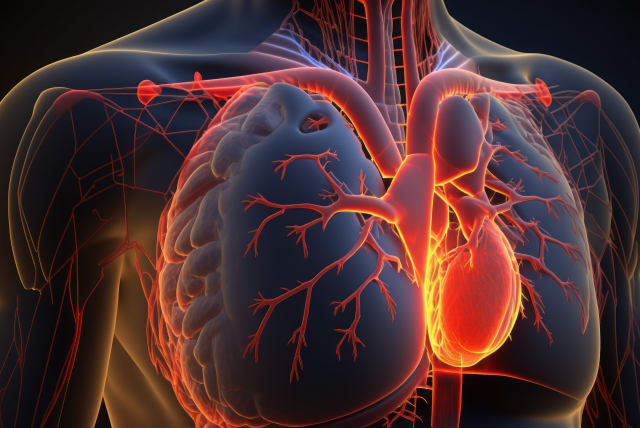Biological processes linked to aging are vital for the regeneration of heart tissue, study finds

Researchers found that an “aging” mechanism known as senescence is activated for a short period of time following injury to the heart muscle of mice as a vital part of the heart’s healing process.
Aging of bodily tissues typically causes them to break down and eventually fail. However, researchers at the Weizmann Institute of Science in Rehovot have discovered that biological processes that are usually linked to aging are, in fact, vital for the regeneration of heart tissue.
This surprising conclusion emerges from a study just published in the prestigious journal Nature Cardiovascular Research. The study was conducted by a research team led by Dr. Rachel Sarig and research student Lingling Zhang from Prof. Eldad Tzahor's laboratory, which is one of the leading labs in the world in cardiac healing and regeneration research.
The scientists have revealed in unprecedented detail – at the level of individual cells – how an “aging” mechanism known as senescence is activated for a short period of time following injury to the heart muscle of mice as a vital part of the heart’s healing process. This is the latest in a series of studies revealing the crucial roles that senescence plays in the development and regeneration of tissues.
“Despite a growing number of studies showing the positive aspects of senescence, the common view in the field remains that senescence is deleterious for human health. We hope that our study serves to change that view,” they wrote.
Findings raise 'red flag'
The findings raise a red flag regarding the currently investigated therapeutic approach to eliminating senescent cells—a practice that might prove dangerous.
The team described the regenerative senescence signature of the injured mouse heart through proteomics and single-cell RNA sequencing (scRNA-seq). They concluded that “aged cells are required for neonatal mouse heart regeneration and for Agrin-mediated cardiac repair in adult animals and provide insights into the essential role of Egr1 in senescence and regeneration.”
“Numerous studies across different organs and disease models, including aging and models of heart diseases, have explored the prospect of eliminating senescent cells in order to enhance tissue function,” they wrote. “Our study, alongside previous research demonstrating essential beneficial roles for senescent cells, underscores the need for caution when trying to non-specifically remove these cells using various drugs, as such interventions could be harmful if applied during the healing process.”
Jerusalem Post Store
`; document.getElementById("linkPremium").innerHTML = cont; var divWithLink = document.getElementById("premium-link"); if (divWithLink !== null && divWithLink !== 'undefined') { divWithLink.style.border = "solid 1px #cb0f3e"; divWithLink.style.textAlign = "center"; divWithLink.style.marginBottom = "15px"; divWithLink.style.marginTop = "15px"; divWithLink.style.width = "100%"; divWithLink.style.backgroundColor = "#122952"; divWithLink.style.color = "#ffffff"; divWithLink.style.lineHeight = "1.5"; } } (function (v, i) { });

